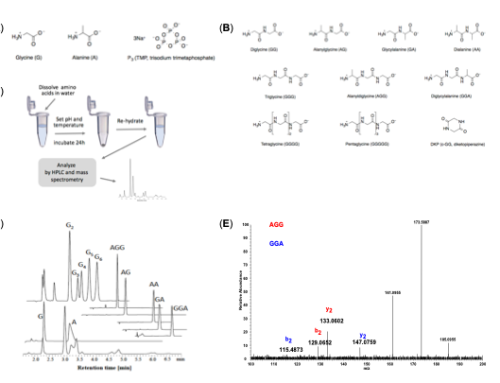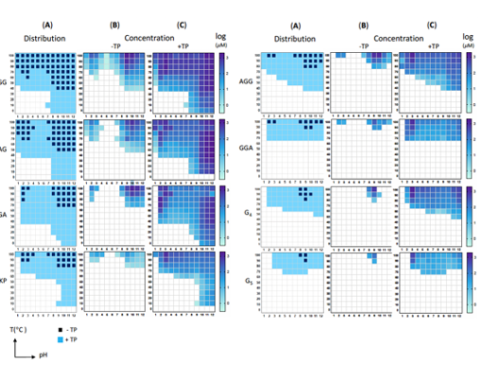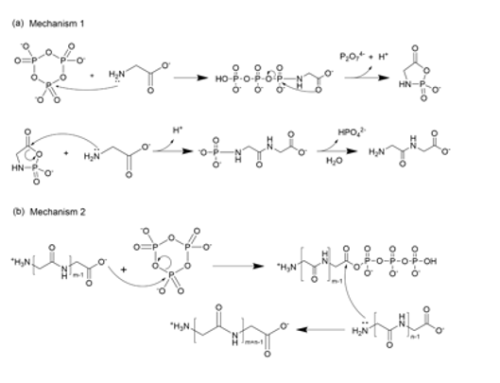How does drying affect the distribution of peptide products?

To understand in greater depth how different peptide products enrich, we studied how glycine(G) alone forms products of different length (GG, GGG, and GGGG) during sample drying. In (a) we see the how drying of 1 ml reaction solution is complete in about 8 hours (shaded box). In the presence of TP and at high pH (black data points and curves), for 0-to-2 hours. when most of the initial solution volume is present, GG readily forms (b), GGG is detectable (c), and GGGG cannot be detected. It is interesting to note a sharp rise in GGG production from 4-to-6 hours (c), when most of the solution has evaporated, indicating a transition in the reaction conditions. If pH is not set high or TP is absent, then product yields are generally lower as seen for orange and green data. For further details, see Boigenzahn and Yin, 2022.




